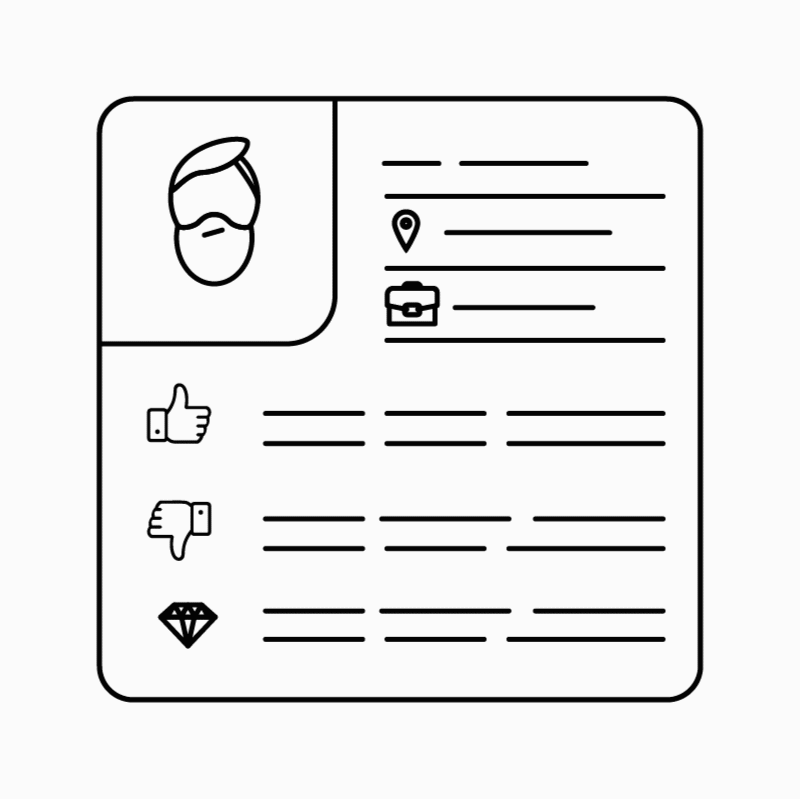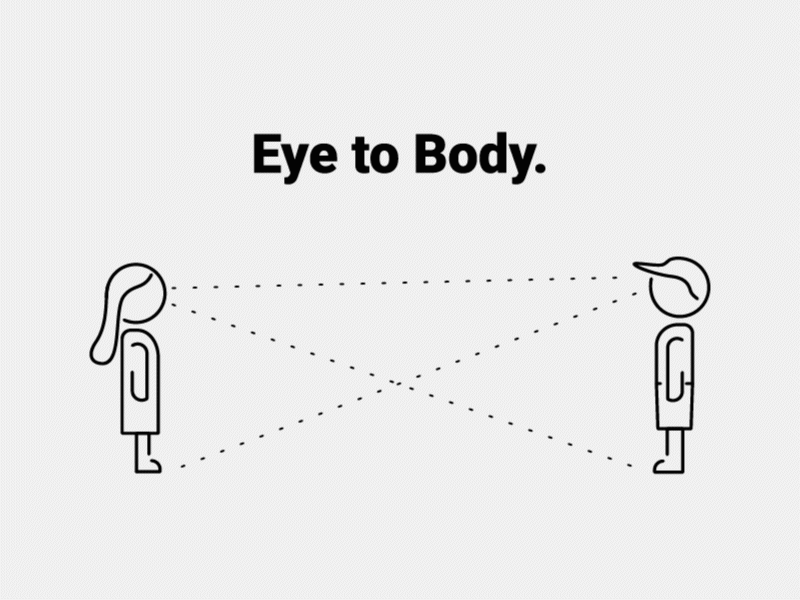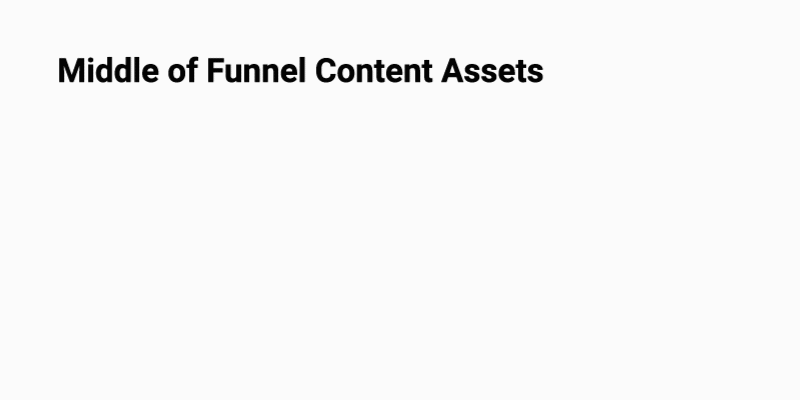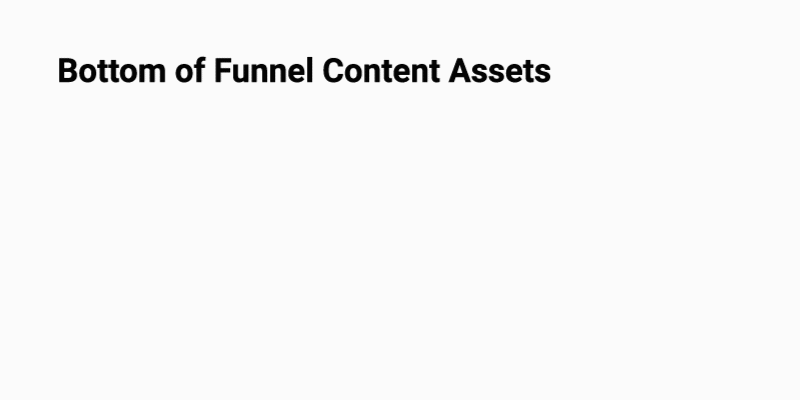Introduction
We find that many companies’ understanding of content marketing is far too small. Many consider blogging to be the entirety of content marketing. Although that is certainly a key asset in a successful content marketing strategy, it is only a small part of a much larger and diverse funnel of content marketing assets. In reality, content marketing exists in every phase of the customer acquisition journey, from attracting new prospective customers to driving sales and growing our client’s businesses. Content is your copy, it is your photo and video, it is your website, it is your social media platforms. Content is everything.
A successful content marketing strategy identifies the targeted demographic, considers who they are, what their interests are, and what they need, and then carefully delivers content assets to the end-user in a way that strategically ushers them from cold prospects to paying customers.
Know Thy Customer
The first step in building a content marketing strategy that lasts – one that works in perpetuity for you – is identifying your ideal end-user. Before they start creating content, successful companies know, through extensive research and deep inquiry, exactly who their target audience is and what makes them tick. This is essential as it will inform your brand tone, voice, and the type of content you are producing.

To understand the consequences of not knowing your audience, observe the following scenario:
Perhaps you have a solid collection of well-produced content. By all standards, it is highly effective. However, you haven’t properly identified your target audience, and you’ve misinterpreted their interests and behaviors. All of the money you spent on content creation and ad spend is now placed in front of a group of people who don’t need or want your product.
When identifying your target audience, you want to go beyond just common demographics such as age, gender, and location. What are they interested in? What are they reading? Who do they follow? What events do they attend? What is the problem they are trying to solve in their life? You want to ask as many questions as possible to narrow down as best you can, where your desired end-user is hanging out. Once again, if this stage is misinterpreted, the entire customer journey is compromised, as is your content strategy, as you will be presenting a solution to a group of people that simply don’t have the problem your solution solves.
Content Marketing is Friendship Marketing
Once an ideal end-user is properly, and confidently identified, the companies that find success in content marketing intimately understand the customer acquisition journey or “buyer’s journey“. The customer acquisition journey is a virtual path all of your customers take as they convert from strangers to loyal customers. Not all prospective customers enter into the journey at the same place along the path, but the path remains the same. Your job is to have the content assets in place to help potential customers, wherever they may enter into the journey, naturally and logically move to the next stage of the journey. Your job is to make their journey to making a purchase decision as frictionless as possible.

Where companies fail is when they are either missing certain content assets in specific stages of the journey, allowing prospects to leak out of the funnel. Or, they are sending the wrong asset to the wrong person at the wrong phase of the journey.
To explain, at its core, content marketing is just like a human relationship. And that is what your business is all about, right? The people you are serving, and the relationship you have with them. Content marketing is the way to find those people, then build and nourish them from strangers into a natural, organic friendship. If done right, this will be a friendship that lasts a long time.
Understanding this relationship is perhaps the most vital part of a successful content marketing strategy. Behavioral scientist Desmond Morris discovered that there are 12 stages of human intimacy. Morris found that those couples who followed these 12 stages typically maintained strong long term relationships. This innate process in human relationships translates over to the relationship between the buyer and the organization. Your goal as a marketer is to figuratively guide your audience to stage 5, aka a best friend.
The 5 Stages of Human Intimacy
Below are the first five stages of human intimacy, that closely parallel the customer acquisition journey, which will help inform the type of content you are sending to whom, and when:
1. Eye to body. You notice the person. For marketers, this is identifying your target market.
2. Eye to eye. Your eyes meet. You notice each other. For marketers, this is the first point of contact. They are now aware of you.
3. Voice to voice. You call or text, or email back and forth. Your relationship starts to grow. This stage, the permission stage, should last the longest.
4. Hand to hand. You hold hands. At this point, they have enough trust in you for you to make an offer, and they purchase your product.
5. Hand to shoulder. You put your arm around their shoulder. This publicizes your relationship. This is the ambassador stage. At this point, the customer has purchased your product or service and is publicly endorsing your brand.

Generally, if 2 or more of these stages are skipped at a time (and even just 1, depending on the circumstances), well, that is typically considered assault (resulting in an unsuccessful short term relationship, with obvious long term negative consequences). There are no shortcuts to a long-lasting healthy relationship. Unfortunately, that is exactly what many companies are figuratively doing with their content marketing – taking shortcuts, committing marketing assault. They are sending stage 5 content assets to end-users who have only just been made aware of you in stage 1 or 2.
Knowing this, it is imperative to understand what type of content marketing assets to send to whom and when, and how to send it to them.
It All Exists Within A Funnel
Broadly speaking, we separate content marketing assets into three groups: Top of Funnel, Middle of Funnel, and Bottom of Funnel. The purpose of Top of Funnel content is to generate awareness and spark engagement. In the middle of the marketing funnel, content assets should educate, entertain, and gain permission to speak one to one. At the bottom of the funnel, your content assets should aim to convert, and excite for the next purchase.
Top of Funnel Content Assets
Top of funnel assets are meant to generate awareness. Remember, those receiving these assets don’t know who you are yet. Your job here is to meet them where they are, providing them with valuable content that aligns with their interests or behaviors.
These assets should be completely free and un-gated, meaning they are readily available for prospects to consume. Below are some assets you can utilize in your top of funnel content marketing strategy.
- Blog Posts – Blogging is used to generate awareness, create buzz, and inform our clients’ prospective customers.
- Copywriting – Copywriting plays a critical role in both paid advertising and organic media, all throughout the customer journey. How you are talking to different audience segments along the customer journey is where many organizations fall short, and end up losing current customers due to overstimulation or prospective customers due to overstepping boundaries.
- Videos/Photos – Video and Photo have the unique ability to engage your audience no matter where they are in the consumer journey. A medium that can not only inform your audience but make them feel a certain way is a powerful tool to have in your digital marketing toolbox.
- Social Media Posts – Social Media Marketing exists throughout the entire journey. It utilizes advertising to acquire new fans, graphic design, video, and photo to nurture them, and branding to elevate them into a brand ambassador position. If you don’t have a presence on social media, with an effective strategy, you are leaving customers on the table.
- Infographics – These are great for giving quick and accessible facts to answer the top of mind questions consumers have. Graphic design acts as a visual translator between your business’ core values and your audience. Through clean, thought-provoking design, you can engage current customers and attract new ones.
Getting these assets in front of your desired target audience can be done in various ways:
- Paid media – Social Media Advertising allows us to send content assets to cold audiences based on interests and behaviors. Paid media can be sent on social media platforms like Facebook, Instagram, and Pinterest, and the asset could be anything from a blog post to a meme and everything in between.
- SEO – This is incredibly important for meeting people in their exact moment of need. People use google every day searching for solutions, and if you can position yourself and your solution in front of them when they need you the most, you are setting yourself up for success.
- PPC – We can also use google ads to get our assets in front of an audience based on key search words. This is typically done later on in the funnel, when end users are warmer, and actively searching for a solution.
- Organic Media – This is the media readily available to consumers. Common places for organic media are on webpages and social media platforms.

Middle of The Funnel Content Assets
In the middle of the funnel, the job of the content is to make end-users aware that there are options for them to consider that will fulfill their need or want. At this point, you are still providing them with valuable information, although you have migrated from entertaining them to educating them. At this stage, you have built up enough equity in the relationship to ask them for permission to talk to them one on one. This typically involves the end-user giving their email in exchange for a valuable piece of content that isn’t available to the general public. Types of middle of the funnel content assets include:
- Case Studies – As customers continue to educate themselves, case studies provide a source for the potential customer to ease their minds by seeing your product or service in action.
- Webinars – A webinar is a great way to generate trust in the relationship. Giving potential customers “exclusive” access encourages a sense of affiliation for the brand, and that they have access to something others don’t.
- White Papers – These are another source of educational information consumers can use to become more comfortable with the idea of making a purchase decision.
- Email Marketing – Email Marketing is implemented throughout the customer lifecycle to build and nourish current customer relationships.
We utilize re-marketing tactics to send more focused and direct content to those who showed an interest in the first level of content. This typically includes the use of paid media.

Bottom of the Funnel Content Assets
At the bottom of the funnel, we implement an integrated set of content assets in the form of paid media and organic media, all with the goal of ascending warmed up leads into paying customers. There will be those end-users that have finally found what they were looking for and move forward through the process rapidly, making a decision to purchase on their own. For those who need to be nourished into this decision, we can offer them less intimidating deals, that minimize the mental barriers to purchase.
- Email marketing – Email Marketing has proven to be a consistent leader in eCommerce sales. Communicating offers with your potential customers through email is an effective way to present these types of sales.
- Customer Reviews – A fellow consumer will always be more trusted than corporate generated content.
- Free Trials – The easiest way to eliminate risk in the consumer’s mind is to offer them a free trial.

It Doesn’t Stop Here
Once a cold prospect becomes paying customers, you now have the critical task of elevating them to loyal supporters and super fans of your organization. First, for repeat purchases, and more importantly for the positive word of mouth they will generate. COntent delivered to current and returning customers should be centered around giving them ownership in the brand and creating affiliation. Types of content assets to use once a prospective customer has become a purchasing customer include:
- Recurring Content – Recurring content plays a critical role in keeping current customers engaged and excited about your brand. This could be a weekly live video, or a weekly themed post, or a monthly newsletter.
- Email Marketing – Utilizing this one to one communication will allow you to stay top of mind, and help create the affiliation you are striving for.
- Social Media – Consumers love interacting on social media. It is important to be active and engaged with them, answering comments, messages, and mentions.
- User-Generated Content – Nothing makes a consumer feel more important than if their content is used by a brand they love.
When you think of your customers as actual people that you are trying to build a relationship with (rather than just a revenue stream), your marketing then becomes a way to get to know them. This is where you will find the right type of content to send to them. Not all companies have the capacity to create such robust content strategies, however, the path to becoming a purchaser remains the same. As long as you are able to provide content that removes barriers in the way of that path, you will have a successful and clear path to conversion.
Conclusion
Partnering with Sproutbox will not only ensure your content is of the highest quality but more importantly, that the right type of content is being delivered to the right person at the appropriate time along the customer journey.
